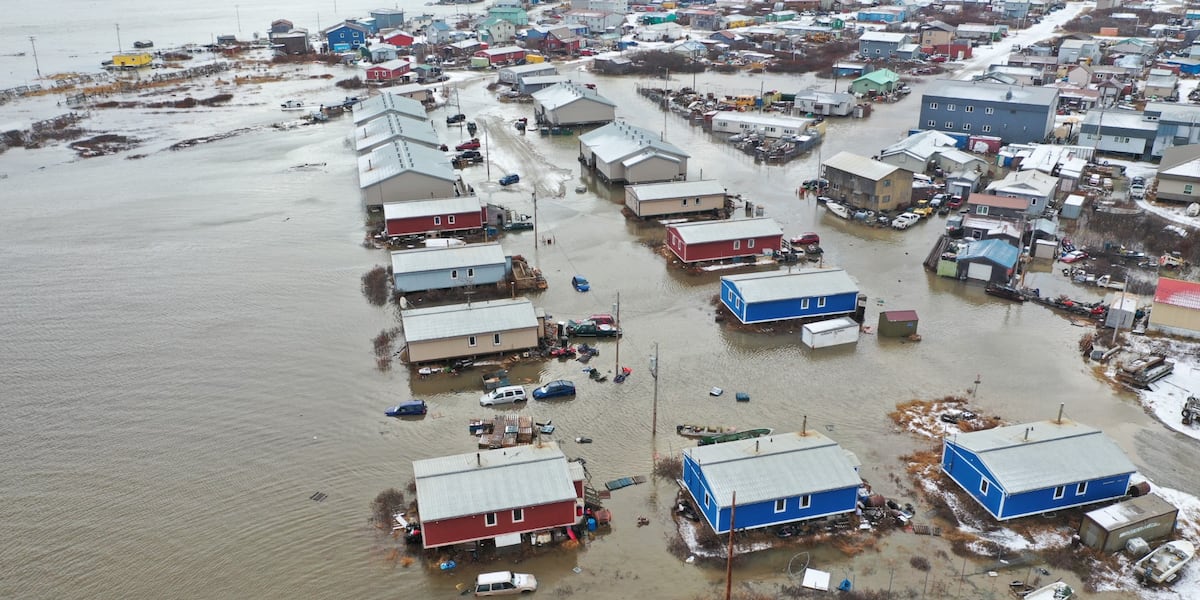The most consequential Alaska business transaction in a generation might seem like a done deal, but it continues to cast a long shadow over Alaska and is now before the Alaska Supreme Court.
In 2020, Alaska’s public utility commission, the Regulatory Commission of Alaska, or RCA, permitted Hilcorp to take over BP’s operations on state lands and waters — including the dominant ownership of our most important energy infrastructure, the Trans-Alaska Pipeline System. Hundreds of Alaskans commented on the deal, with most urging the RCA to ensure transparency, require a full evidentiary hearing, and hold Hilcorp accountable.
It’s not surprising that this was the most contentious and best-attended pipeline transfer case in Alaska history. Faced with widespread public concerns about Hilcorp’s secrecy and environmental and worker safety violations, what did the RCA do? The agency in charge of protecting the “public interest” again and again sided with Hilcorp and eroded the ability of Alaskans to meaningfully participate in the stewardship of our public resources.
[Alaska Supreme Court to hear arguments in fight by Valdez to unlock Hilcorp financial data]
First, the RCA allowed Hilcorp to keep its basic financial details secret. The Alaskan public has no idea if Hilcorp has the resources to properly maintain TAPS, cleanup a major spill like the Exxon Valdez, or make Alaskans whole when an oil spill occurs. Every other major owner of TAPS since 1977 has been forthright with the public about its financial fitness — but not Hilcorp. The RCA allowed Hilcorp to evade public scrutiny, even though Hilcorp is only 3% the size of BP, had questionable finances, and was forced to borrow money from BP to complete the transaction — what we might call the “Prudhoe Bay lay-a-way.” Ultimately, the RCA sided with Hilcorp over Alaskans, then approved the BP-Hilcorp deal based on a secret record.
One RCA commissioner, former Lt. Gov. Stephen McAlpine, vehemently disagreed with this decision: “Airing these documents publicly and subjecting the entire transaction to intense debate far outweighs (Hilcorp’s) interest in keeping them confidential. Instead, Hilcorp has invited an unnecessary public relations nightmare over what may come of the lifeblood of our state.”
McAlpine is right and most Alaskans agree with him. Sixty-two percent of Alaskans polled in December 2019 wanted Hilcorp to publicly disclose their finances as a condition of the sale.
Second, the RCA did not seriously weigh Hilcorp’s long and troubling record of environmental and worker safety violations. Although the Alaska Oil and Gas Conservation Commission, or AOGCC, found that the Texas company’s “disregard for regulatory compliance is endemic to Hilcorp’s approach to its Alaska operations,” the RCA concluded that this wasn’t material since AOGCC jurisdiction weren’t related to pipeline operations. Even though Hilcorp had the second worst spill record of 78 pipeline operators in the US, according to the Pipeline and Hazardous Materials Safety Administration, the RCA dismissed these federal findings because there was “comparatively low amount of property damage from the incidents.”
Hilcorp has only continued to rack up environmental violations. The AOGCC just fined Hilcorp $267,000 for violating an approved drilling process, citing Hilcorp’s “lack of good faith” and “repeat violations (which) … call into question the seriousness and effectiveness of Hilcorp’s efforts to improve its regulatory compliance.” The RCA’s lackadaisical attitude toward Hilcorp’s environmental crimes has potentially emboldened the company known for its “acquire and exploit” business strategy.
Third, the RCA refused to hold an evidentiary hearing, as is standard in all major RCA cases. This means that public stakeholders — like the City of Valdez — were not allowed to become “parties” and see the basic information, like Hilcorp’s finances, at question. Once again, the RCA excluded Alaskans from meaningfully participating in the management of our resources and gave outside corporations undue power.
Finally, the RCA agreed to a radical, untested division of responsibility to clean up TAPS at the end of its life. Never before in Alaska’s history have our regulators allowed a company to operate a pipeline system without also being responsible for its full cleanup. Yet this is exactly what the RCA did. The commissioners concluded that it was “highly likely” that Hilcorp — specifically, its affiliate Harvest — could not pay its share for cleanup, and therefore BP was on the hook for cleanup. The RCA agreed to an absurd bifurcation: Hilcorp lacks the ability or responsibility for cleanup, while BP — which has left the state entirely — will owe the $2.5 billion to Alaska. TAPS owners have famously sued each other to evade clean-up responsibility. Does anyone believe there will be TAPS remediation money when we need it, from those who are responsible for paying it?
The RCA’s decision constitutes a series of regressive precedents that will leave Alaskans more vulnerable to secretive corporations, erode our democracy, and leave Alaskans potentially paying billions to cleanup abandoned oil infrastructure. The commission failed to protect the public interest.
Fortunately, Alaskans are not letting the RCA relinquish our public rights to private oil companies without a fight.
The City of Valdez filed suit against the RCA for its harmful decisions and brought the case all the way to the Alaska Supreme Court. All Alaskans have a vested interest in the City of Valdez prevailing over Hilcorp and the unconstitutional actions of the RCA.
At 1:30 p.m. on Tuesday June 27, the Alaska Supreme Court will hear oral arguments in this case. All Alaskans are welcome to attend the oral arguments in person. If you cannot attend in person, you can tune in virtually via Gavel Alaska.
A healthy showing of Alaskans will further demonstrate the enormous public interest stakes of this case. Just as mold grows in the absence of daylight, Alaskan citizens showing up at our Supreme Court brings out the best aspects of our judiciary and our democracy. Now is the time to stand up for our constitutional rights and the public stewardship of Alaska’s resources.
Philip Wight, Ph.D., lives in Fairbanks and is a policy analyst for the Alaska Public Interest Research Group. He recently completed his dissertation in history, titled “Arctic Artery: The Trans-Alaska Pipeline System and the World it Made.”
The views expressed here are the writer’s and are not necessarily endorsed by the Anchorage Daily News, which welcomes a broad range of viewpoints. To submit a piece for consideration, email commentary(at)adn.com. Send submissions shorter than 200 words to letters@adn.com or click here to submit via any web browser. Read our full guidelines for letters and commentaries here.

:quality(70)/cloudfront-us-east-1.images.arcpublishing.com/adn/VSSKGLUCVNFWPLYPUGNRZZV3JA.jpg)




















/cdn.vox-cdn.com/uploads/chorus_asset/file/25822586/STK169_ZUCKERBERG_MAGA_STKS491_CVIRGINIA_A.jpg)

/cdn.vox-cdn.com/uploads/chorus_asset/file/25821992/videoframe_720397.png)




